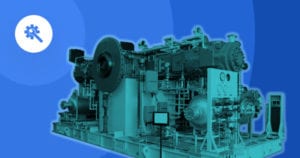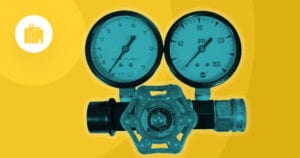
In one of the opening scenes of a Black Mirror episode, a tiny bee drone pollinates a daisy, which basks in the bright glow of a sunny day. In a TV series known for its exploration of a dark and dystopian future, the scene is rare. It portrays a tech-enabled future where robotics are used to enhance lives, not harm them.

But later on, that bee is joined by thousands of more bees in a coordinated attack on a woman. It’s clear that the bees are working together as a single force, using real-time data to achieve a common goal.
This episode stands out among others because it covers a type of technology that’s largely unknown and unexplored by most mass media channels. It points to repercussions of a technology that most people have never heard of, but which is set to change everything we know about the Internet of Things: swarm robotics.
Swarm Robotics is an exciting field of practice inspired by the proliferation of the Internet of Things. Until recently, robotics technology had focused on creating advanced robots that worked alone — think of automated factory floors and friendly robotic baristas that are beginning to pop up in Silicon Valley cafes and various airports.
But now, thanks to insights drawn from the most unlikely of places, nature, the field of robotics is evolving into something much greater, and, as Black Mirror suggests, perhaps more sinister. But, before we go too far down that speculative road, it might be a good idea to first get a basic understanding of how swarm robots work, the technology behind them and what they’re truly capable of right now.
Why Learn About Swarm Robotics Now?
Swarm technology is inspired by swarm intelligence, which draws inspiration from the lives of social insects in nature. One major component is improving communication and response to feedback while working as a team. It involves understanding how constant changes in other robots within the group should affect the group’s functionality.
Most of us understand how IoT is transforming our homes into smart networks that give us all kinds of convenient benefits. But, your connected thermostat, your smart fridge and your Alexa-enabled washing machines all rely on a central “authority” that guides/manages/instructs/informs them on what to do. The smart window blinds that open each morning and allow you to greet the sun without getting out of bed aren’t talking to your connected security system to check whether your neighbor happens to be standing near your bedroom window.
Swarm bots are different. They communicate laterally with one another in a constantly changing environment, with no direction from a higher authority to tell them what to do.
Scientists are now beginning to understand how swarm robotics can have pragmatic applications in the Internet of Things and the world stands poised on the brink of another tech revolution.
The time to learn about swarm robotics is now- the evolution of swarm robotics is forever intertwined with IoT and leaders who want a jump on learning about new directions in tech will want to keep their eyes peeled for new content in this area. Here’s where you can learn how it works, its current applications and what the future looks like in terms of research and development.
What is Swarm Robotics?
Swarm robotics is simply an area of robotics that focuses on coordinating large groups of fairly simple robots using local rules. As stated, swarm-bots are inspired by the lives of social insects such as bees and ants. Among them, the power of the community is leveraged to perform tasks outside the capabilities of the individual.
In swarm robotics, the group of robots isn’t just any group. It’s constituted by mimicking the functional characteristics of insect swarms:
- Simple, almost identical members
- Decentralized control
- Lack of synchronicity
The Inspiration for Swarm Robotics
Social insects have a lot to teach us, from the wasp’s nest-building and the honey bee’s coordination to the termite mound’s construction and the trail-following of ants. For a long time, we thought that these were mysteries we would never understand.
However, in recent times, research has demonstrated that we can mimic these complex systems without the sophisticated knowledge initially thought of as necessary. In a social insect colony, individual members don’t know about the status of the colony as a whole. There is no leader to guide all other individuals in their roles.
Instead, the colony’s knowledge is distributed among agents, and they have systems of exchanging this information. However, individuals cannot accomplish their roles unless the rest of the swarm plays their part.
In the colony, individuals can exchange vital information, such as a food source or imminent danger. The interaction is based on the locality concept so that no individual knows the situation as a whole. They will modify their behavior based on how their mates familiar with the situation behaved. For example, among termites, changes in the behavior of worker termites are determined by the nest structure.
Self-Organizing Behaviors
The simple yet complex organizational system of each agent comes from observing and mimicking others’ interactions with one another and the environment. These interactions move throughout the colony, which is what helps the colony accomplish tasks that cannot be accomplished individually. The interactions are called self-organizing behaviors.
Self-organization combines four characteristics:
- Multiple interactions
- Randomness
- Positive feedback
- Negative feedback
These properties are also desirable when thinking of a system of swarm robots:
- Robustness. They should continue working regardless of whether some individuals fail or if there are environmental disturbances.
- Flexibility with Decision-Making. They should be able to create different solutions depending on the task.
- Flexibility with Roles. They should adapt to changing their roles depending on the need at the time.
- Scalability. They should be able to work in different group sizes, from a few robots to thousands of bots.
These criteria inform the development of any swarm robotics technology.
Desirable Characteristics in Swarm Robots
Based on the definition and the properties above, these are the criteria used in developing multi-robot technology and systems:
- The swarm must consist of autonomous robots, which can sense or actuate in real-life settings.
- They should consist of a large group or as large as control rules will allow.
- They should be homogenous – there can be several types within the swarm, but not too many different types.
- They must not be independent – i.e., the main task to be completed must require collaboration.
- They must only have local sensing and communication capabilities – they shouldn’t understand the overall picture/role of the swarm.
The characteristics embodied by swarm intelligence are borrowed from social insect colonies. In fact, biologists have played a major role in bootstrapping research for swarm bot technology.
A robot swarm is defined as a self-organizing multi-robot system whose main characteristic is high redundancy.
We can also say they have localized sensory and communication capacity, with no access to global information. The collective swarm behavior is the total of individual robots’ interactions with their peers and their surroundings.
Why Invest in Swarm Robotics?
Because of the above characteristics, swarm robotics can help us realize flexible, scalable and fault-tolerant systems across dozens of business and industry verticals.
Swarm-bots also enable the development of systems that can handle a variety of operating conditions and environments. Flexibility is possible because the swarm is self-organized and well-distributed. The robots allocate themselves dynamically to different tasks according to the requirements of their immediate environment; they don’t rely on any global information or pre-existing infrastructure.
Swarm robotics also enables the creation of scalable systems so that the introduction or removal of individuals doesn’t impact swarm performance. Localized sensing and communication enables scalability – provided the density of the swarm isn’t significantly changed; each individual interacts with the same approximate number of peers.
Through swarm robotics, we can create systems that are adaptable to the failure of one or more of the system parts/constituent robots. Therefore, failure of individuals doesn’t result in failure of the entire swarm. This fault tolerance comes from the high-redundancy of the swarm; there’s no centralized control, leaders or individuals in predefined roles.
In Part Two of the series, we’ll look closer at some of the exciting real-world cases where swarm bots are already starting to have an impact.





 Related Podcast Episode
Related Podcast Episode




 Related Applications
Related Applications


 Latest IoT News
Latest IoT News







